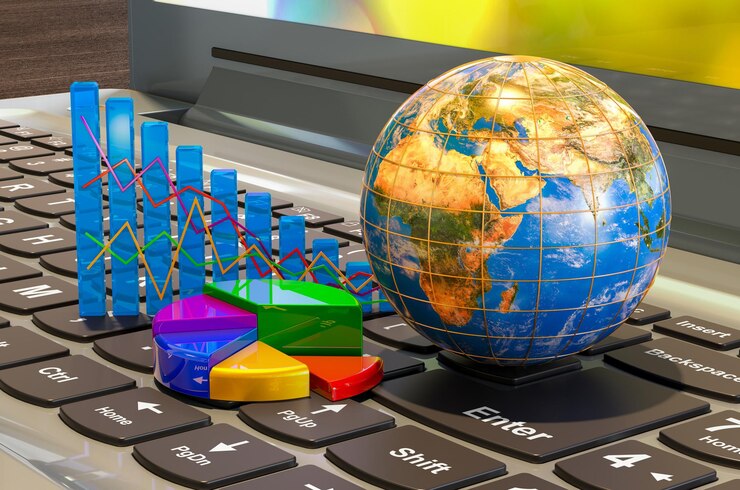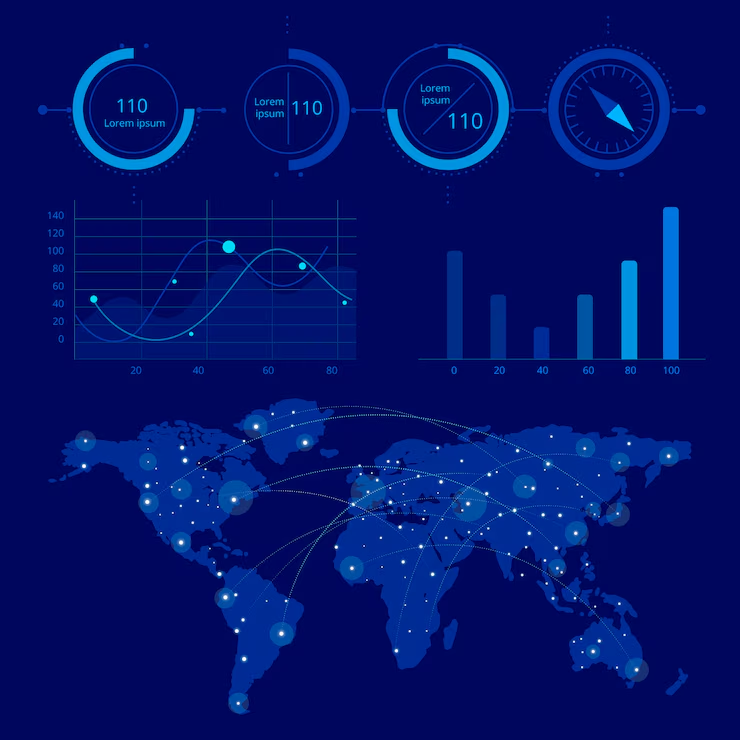The world in 2025 has shown many unexpected changes. From shifts in the economy to changes in the environment, these statistics reveal how fast things can change. Let’s look at some of the most surprising global statistics of this year.
1. Global Economy: Slowing Down
In 2025, the global economy is growing slower than before. The United Nations predicts a growth rate of 2.4% for this year, which is lower than the 2.9% seen last year. This slowdown is due to trade tensions, higher tariffs, and political uncertainties.
China’s economy is also affected. Its growth rate is expected to drop to 4.6% because people are spending less.
In the UK, the private sector is shrinking, and factories are producing less. This has led to job cuts and increased government borrowing.
2. AI’s Growing Role
Artificial Intelligence (AI) is becoming more important in many areas. In the US, AI investments could contribute up to 4% of the country’s GDP, which is about $1 trillion.
Since the release of ChatGPT, funding for AI startups has increased by 58%. This means more AI-powered services are being developed.
In healthcare, AI is helping with tasks like scheduling and administrative work, making services more efficient.
Countries like China, India, and the UAE are leading in AI adoption, with about 58-59% of companies using AI technology.
3. Startup Boom
There are over 150 million startups worldwide, with about 50 million new businesses launching each year.
Unicorn startups, which are private companies worth $1 billion or more, have increased to over 1,200 globally. In 2019, there were just 494.
4. Environmental Concerns
A major coral bleaching event has affected about 84% of the world’s coral reefs. This is the most extensive bleaching event recorded and is mainly due to rising ocean temperatures.
Glaciers are melting, contributing approximately 0.77 millimeters to the rise of global sea levels each year.
5. Population Changes
The global fertility rate has fallen below the replacement level of 2.2 children per woman. This means that populations in many countries are starting to decline.
Countries like Thailand and Chile have seen their fertility rates drop to around one child per woman, raising concerns about aging populations.
6. Internet Usage

About 4.3 billion people worldwide use social media, which is about 54% of the global population.
The average person spends about 7 hours and 4 minutes online daily.
There are over 1.8 billion websites on the internet, but less than 20% are active.
7. Energy Consumption
The United States is expected to break electricity consumption records in 2025 and 2026. This is due to increased demand from data centers, homes, and businesses.
In 2025, total power consumption is projected to hit 4,179 billion kilowatt-hours.
8. Digital Transformation
The global biometric authentication market is expected to reach $52.1 billion by 2029. This includes technologies like fingerprint and facial recognition.
By 2030, there will be more than 2.1 billion connected cars globally. These cars will have internet connectivity and sensor technology.
The edge AI market is projected to reach $43.8 billion by 2027, highlighting the importance of processing data close to where it’s collected.
9. Business Trends
Consumer demand for sustainable products is increasing. Over the past five years, online searches for sustainable goods have risen by 71%.
92% of buyers trust socially or environmentally responsible brands.
10. Social Changes
Trust in institutions and fellow citizens is declining, creating challenges for businesses.
There’s a rise in social and political polarization, especially in the US.
Many people report feeling lonely and socially isolated.
Conclusion
The statistics from 2025 show a world that’s changing rapidly. From the economy to the environment, and from technology to social structures, these changes affect everyone. It’s important to stay informed and adapt to these shifts.

